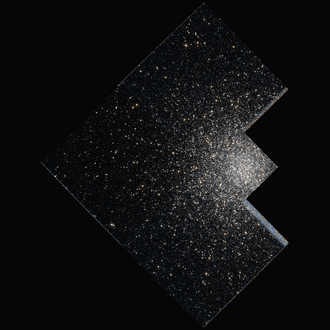NGC 6356
|
Globular cluster NGC 6356 |
|
|---|---|

|
|
| Photo from the Hubble Space Telescope | |
| AladinLite | |
| Constellation | Snake bearer |
|
Position equinox : J2000.0 , epoch : J2000.0 |
|
| Right ascension | 17 h 23 m 35.0 s |
| declination | -17 ° 48 ′ 47 ″ |
| Appearance | |
| Concentration class | II |
| Brightness (visual) | 8.2 likes |
| Angular expansion | 10.0 ' |
| Physical data | |
| Affiliation | Milky Way |
| Integrated spectral type | G3 |
| Radial velocity | (+27 ± 4) km / s |
| distance | 50 kLj |
| diameter | 50 ly |
| history | |
| discovery | Wilhelm Herschel |
| Discovery date | June 17, 1784 |
| Catalog names | |
| NGC 6356 • C 1720-177 • GCl 62 • ESO 588-SC1 • GC GC 4296 • HD 157361 • BD −17 ° 4794 • HI 48 • h 3683 | |
NGC 6356 is a globular cluster in the constellation Ophiuchus , about 50,000 light years from the Sun. With a diameter of 50 light years, it is one of the smallest star clusters in the Milky Way .
The object was on June 17, 1784 by Wilhelm Herschel .